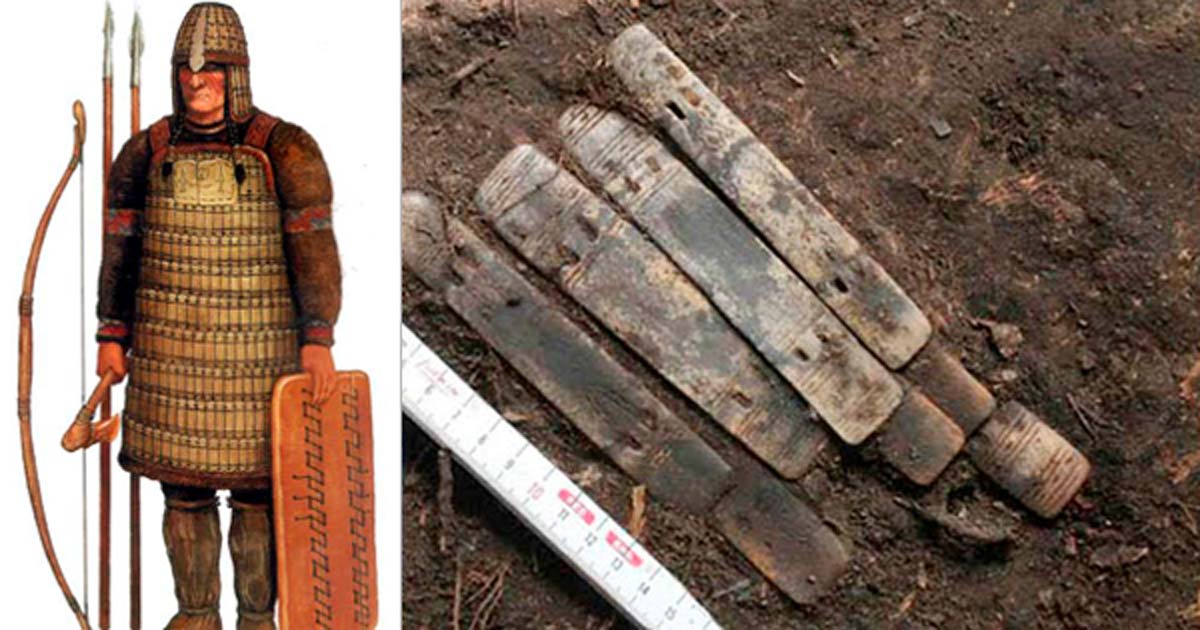2,000-year-old Warrior Armor Made of Reindeer Antlers Found on the Arctic Circle
By: The Siberian Times Reporter
The ceremonial suit was embellished with decorations and left as a sacrifice for the gods by ancient bear cult polar people, say archeologists. The discovery is the oldest evidence of armor found in the north of western Siberia, and was located at the rich Ust-Polui site, dating to between the 1st century BC and the 1st century AD.
Earlier discoveries at the site indicate a bear cult among these ancient people.
Archeologist Andrey Gusev, from the Scientific Research Centre of the Arctic in Salekhard, said the plates of armor found at the site are all made from reindeer antlers.
- The discovery of 4,000-year-old Siberian knight armor made of bone
- A Window into the Traditional Sami Culture: Reindeer and a Worldview
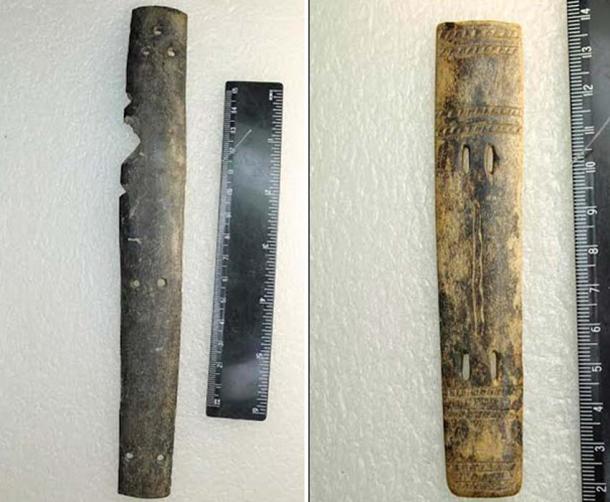

'The largest were 23-25 centimetres in length (pictured upper left). Others are 12-14 centimetres in length, thinner and richly ornamented (pictured upper right and bottom).' Pictures: Andrey Gusev
'There are about 30 plates in the collection of Ust-Polui,' he said. 'They differ regarding the degree of preservation, as well as the size, location of mounting holes, and the presence or absence of ornamentation.'
The largest were 23-25 centimetres in length. In ancient times, they would have been fixed to a leather base and offered a reliable means of protection.
Others are 12-14 centimetres in length, thinner and richly ornamented.
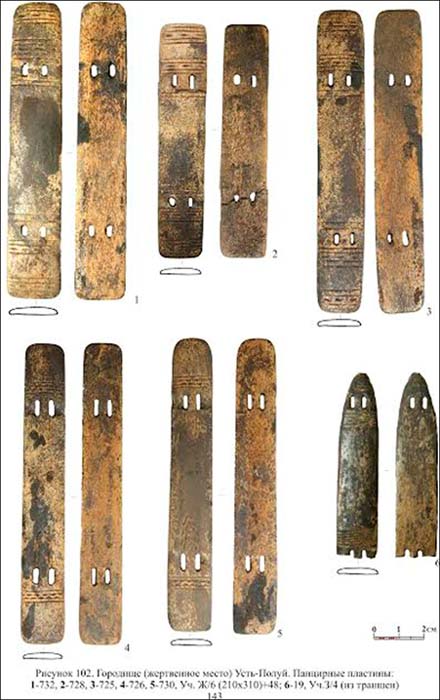

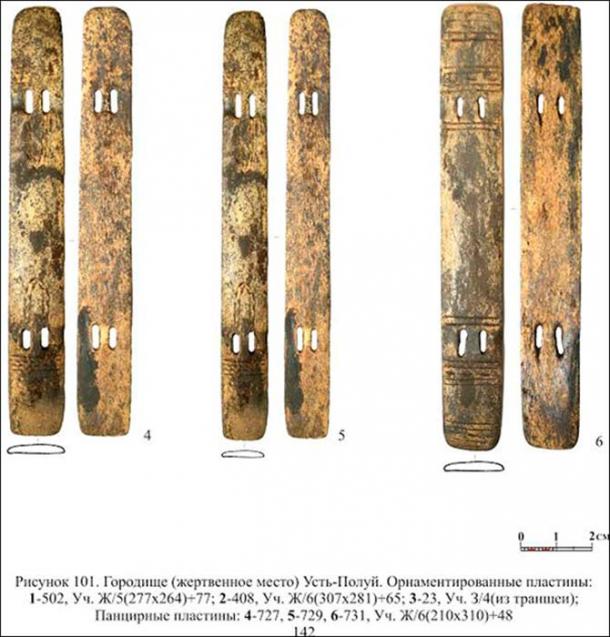
'I'm writing still under the impression, as I've just seen these things. This is literally a world scale discovery'. Picture: Bear ring, bronze, finding of 2013, by Andrey Gusev
'The ornamentation on the plates can be individual, that is after the thorough analysis we could say how many warriors left armor here, judging by the style of decorations.'
Other conical shaped armor is seen as plates on helmets worn by the ancient warriors. 'In the taiga zone of Western Siberia, finds of real iron helmets were extremely rare,' he said. 'But in the middle of the first millennium AD, bronze images appeared of people wearing headdresses clearly resembling helmets.
'A likely explanation may be a long tradition of making antler helmets.'
- Discovery of Reindeer Antlers in Denmark may Rewrite Start of Viking Age
- Dogs of War: Ancient History of Animals in Warfare
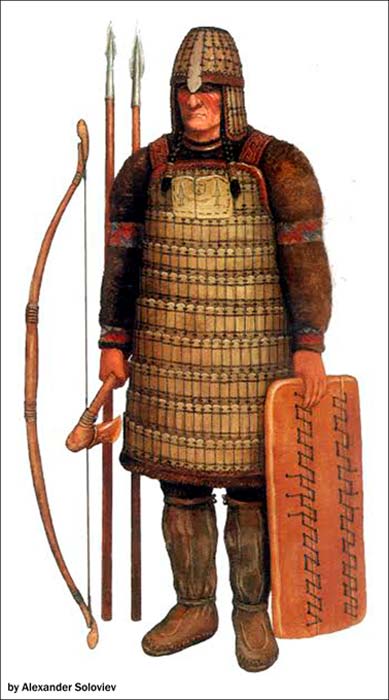
According to Gusev Yamal, the armor resembled the design used by Kulai peole. Picture: Alexander Soloviev
Gusev said the armor resembled the warrior picture here, which relates to designs used by the Kualai people, hunters and fishermen native to the taiga.
He believes the armor was deliberately left at Ust-Polui, an ancient sacred place, as a gift or sacrifice to the gods.
As previously revealed by The Siberian Times, a 2,000 year old ring found at the same site is seen as proof of a bear cult among these ancient polar people who left no written records.
Made of high quality bronze, this ancient Arctic jewellery features an image of a bear's head and paws. 'The ring is tiny in diameter so even a young girl, let alone a woman, cannot wear it,' he said. 'We concluded that it was used in a ritual connected with a bear cult and was put on the bear claw.'
- Mummy of a child warrior from lost medieval civilization unearthed near Arctic
- Found: Grave of Siberian Noblewoman up to 4,500-Years-Old With Links to Native Americans



A 2,000 year old ring found at the same site is seen as proof of a bear cult among these ancient polar people who left no written records. Pictures: Andrey Gusev
The theory is that the ring was fitted to the claw of a slain bear, an animal worshipped by ancient Khanty tribes as an ancestor and a sacred animal. 'After killing the bear they had a bear festival to honor the animal's memory. The head and front paws a bear was adorned with a handkerchief, rings, and a few days lying in the house.’
'This combination of images on the ring and the fact that it was found in the sanctuary of Ust-Polui led us to believe that a bear cult was also practiced there.'
Top Image: 'The ornamentation on the plates can be individual, that is after the thorough analysis we could say how many warriors left armor here.' Picture: Andrey Gusev Insert: According to Gusev Yamal armor resembled the design used by Kulai peole. Picture: Alexander Soloviev
The article ‘2,000-year-old Warrior Armour Made of Reindeer Antlers Found on the Arctic Circle’ originally appeared on The Siberian Times and has been republished with permission.
















